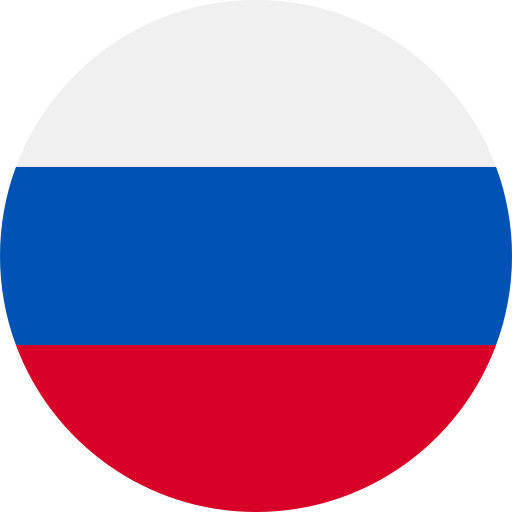Key Takeaways
- Diverse Paths Post-USSR: Each Russian-speaking nation has navigated its unique cultural, political, and economic journey since the USSR’s dissolution in 1991, leading to distinct national identities.
- Language as Identity: The prominence of the Russian language varies significantly; in Ukraine, nearly 30% identify as Russian speakers, while Kazakhstan promotes bilingualism to foster unity among ethnic groups.
- Cultural Influence: Literature and arts reflect historical ties and contemporary issues; local authors gain recognition while grappling with their Soviet pasts amidst ongoing cultural preservation efforts.
- Economic Challenges: Economic development strategies differ widely; some nations like Estonia embraced rapid market reforms, while others face challenges such as corruption and reliance on natural resources.
- Political Dynamics: Russia continues to influence former Soviet states’ politics, with countries like Belarus aligning closely with Moscow, whereas Ukraine seeks greater autonomy amid ongoing tensions.
- Geopolitical Alliances: Regional conflicts and shifting alliances characterize the political landscape; Central Asian nations balance relations between Russia and China while pursuing strategic partnerships for growth.
Have you ever wondered how Russian-speaking nations have evolved since the fall of the USSR? The breakup of this colossal empire in 1991 reshaped not just borders but also cultures, economies, and identities across Eastern Europe and Central Asia. Today, these countries navigate a complex landscape where history intertwines with modern challenges.
From Ukraine to Kazakhstan, each nation has carved its unique path while grappling with the legacies of their Soviet past. Understanding these dynamics is crucial for anyone interested in geopolitics or cultural studies. So let’s dive into the fascinating world of Russian-speaking nations post-USSR and explore how they’re redefining themselves on the global stage.
Overview of Russian Speaking Nations Post USSR
The dissolution of the USSR in 1991 significantly changed the landscape of Eastern Europe and Central Asia. Numerous nations emerged from this historical event, each navigating its unique cultural, political, and economic journey while maintaining a substantial Russian-speaking population.
Countries like Ukraine and Belarus exhibit complex identities where Russian remains a prominent language. In Ukraine, for instance, nearly 30% of people identify Russian as their primary language. This linguistic presence influences media, education, and daily communication despite ongoing tensions regarding national identity.
Kazakhstan presents another interesting case. With around 20% of its population being ethnic Russians, Kazakhstani cities feature bilingual signage and media outlets broadcasting in both Kazakh and Russian. The government promotes proficiency in both languages to foster unity among diverse ethnic groups.
In the Baltic states—Estonia, Latvia, and Lithuania—the legacy of Soviet rule still resonates. While these countries prioritize their native languages in administration and education, significant segments of their populations speak Russian fluently. Approximately 25% of Latvia’s residents are ethnic Russians who often form distinct communities within urban areas.
Central Asia showcases a mix of outcomes as well. Countries such as Kyrgyzstan maintain a sizable percentage of Russian speakers due to historical ties with Moscow; around 17% speak it at home. Meanwhile, Uzbekistan has seen a decline in the use of Russian over recent decades as it embraces Uzbek nationalism.
Each nation reflects its history through how it engages with the Russian language today—whether embracing it or seeking to reduce its influence. Understanding these dynamics adds valuable context for anyone interested in regional geopolitics or cultural interactions across post-Soviet spaces.
Historical Context
The landscape of Russian-speaking nations shifted dramatically after the dissolution of the USSR in 1991. This breakup not only altered borders but also reshaped cultural and linguistic identities across Eastern Europe and Central Asia.
Dissolution of the Soviet Union
The Soviet Union’s collapse marked a pivotal moment in history. On December 26, 1991, it officially ceased to exist, resulting in the emergence of 15 independent republics. Each nation faced unique challenges as they navigated newfound sovereignty while dealing with the legacies left by decades of centralized control. Economies had to transition from state-run systems to market-driven models, often leading to instability and hardship for many citizens.
Emergence of Independent Nations
As these countries declared independence, their paths diverged significantly. Ukraine sought to assert its national identity amid a substantial Russian-speaking population that constituted nearly 30% of its people. Kazakhstan embraced bilingualism due to about 20% ethnic Russians living within its borders, promoting unity among various ethnic groups. The Baltic states prioritized their native languages; however, large Russian-speaking communities remained influential in shaping local culture and politics.
In Central Asia, Kyrgyzstan retained a notable percentage of Russian speakers despite embracing Kyrgyz nationalism. Uzbekistan experienced a decline in Russian usage as it focused on promoting Uzbek language and culture post-independence. Each nation’s journey reflects how historical context influences current dynamics while navigating relationships with Russia amidst changing geopolitical landscapes.
Cultural Significance
The cultural significance of Russian-speaking nations post-USSR extends beyond language, influencing identity, literature, and the arts. These elements weave together to shape societal narratives in a rapidly changing world.
Language and Identity
Language plays a crucial role in shaping national identities among Russian-speaking nations. In Ukraine, for instance, nearly 30% of the population identifies Russian as their primary language. This linguistic divide often sparks debates about national identity and allegiance. Kazakhstan’s approach promotes bilingualism, recognizing both Kazakh and Russian languages as vital for unity among diverse ethnic groups. In Latvia and Estonia, significant Russian-speaking communities exist alongside efforts to prioritize native languages, highlighting ongoing tensions between cultural preservation and integration.
Literature and Arts
Literature and the arts continue to thrive in these nations, reflecting their unique histories while addressing contemporary issues. Writers from Ukraine to Kyrgyzstan explore themes of independence, identity, and memory through their works. The rich tapestry of artistic expression showcases how these countries grapple with their Soviet pasts while forging new paths forward. The influence of Russian literary traditions remains evident; however, local authors are increasingly gaining recognition on global platforms.
These cultural dynamics contribute significantly to regional geopolitics and foster deeper understanding among nations that share a complex history marked by both collaboration and conflict.
Economic Development
Economic development in Russian-speaking nations post-USSR has varied significantly, influenced by each country’s unique historical context and socio-political landscape. These nations face distinct challenges while pursuing growth and modernization.
Market Reforms and Challenges
Market reforms following the USSR’s collapse aimed at transitioning from command economies to market-driven systems. Some countries, like Estonia and Latvia, quickly embraced privatization and deregulation, leading to rapid economic growth. In contrast, others struggled with corruption, weak institutions, and dependency on natural resources.
For instance, Ukraine encountered hurdles due to political instability and ongoing conflict in eastern regions. Kazakhstan leveraged its vast oil reserves for economic stability but faced challenges diversifying its economy beyond energy sectors. Each nation’s approach to reform reflects its strategic priorities while dealing with the legacies of Soviet central planning.
Integration with Global Economy
Integration into the global economy remains crucial for these nations’ economic aspirations. Countries like Lithuania have successfully joined the European Union (EU), benefiting from trade agreements that enhance their export capabilities. Meanwhile, Central Asian states are exploring partnerships with China through initiatives such as the Belt and Road Initiative to improve infrastructure.
Trade relationships fluctuate based on geopolitical interests; however, many Russian-speaking nations continue cultivating ties with Russia while seeking deeper connections with Western markets. This duality often shapes their foreign policy strategies as they navigate complex international dynamics.
Understanding these economic developments provides insight into how Russian-speaking nations adapt to new realities while addressing past influences on their growth trajectories.
Political Landscape
The political landscape of Russian-speaking nations post-USSR remains complex and dynamic. Each country navigates its unique challenges stemming from historical ties to Russia and the Soviet Union, impacting domestic policies and international relations.
Influence of Russia
Russia’s influence persists across many former Soviet states, shaping their political choices and cultural narratives. Countries like Belarus maintain close ties with Moscow, often aligning with Russian policies. In contrast, Ukraine’s recent history reflects a struggle for autonomy against Russian pressure, especially following the annexation of Crimea in 2014. The tensions between pro-Russian sentiments and nationalist movements significantly affect governance and public opinion in these regions.
Kazakhstan balances its relationship with Russia while fostering a sense of national identity among its diverse population. This nuanced approach aims to promote stability amid regional pressures. Meanwhile, the Baltic states prioritize EU integration as a counterbalance to Russian influence, emphasizing their sovereignty through robust democratic practices.
Regional Conflicts and Alliances
Regional conflicts further complicate the political landscape among Russian-speaking nations. Tensions in Eastern Europe highlight differing alliances; for instance, Armenia and Azerbaijan remain embroiled in conflict over Nagorno-Karabakh, affecting regional security dynamics.
Central Asian countries also face challenges related to internal governance issues while trying to maintain strategic partnerships with both Russia and China. These alliances shift based on economic needs or security concerns but often reflect broader geopolitical trends.
Understanding these complexities provides insight into how each nation maneuvers within this intricate web of influences while striving for stability amidst ongoing changes in global politics.
Conclusion
The transformation of Russian-speaking nations after the USSR’s collapse is a testament to their resilience and adaptability. Each country has carved out its own identity while grappling with the legacies of their shared history.
As you explore these nations, you’ll find a rich tapestry of culture language and politics that continues to evolve. The interplay between historical ties and modern aspirations shapes not only individual identities but also regional dynamics.
Understanding this complex landscape enhances your perspective on contemporary geopolitics in Eastern Europe and Central Asia. Engaging with these nations’ stories allows for deeper insights into their unique challenges and triumphs as they navigate an ever-changing world.
Frequently Asked Questions
What are the main themes of the article on Russian-speaking nations?
The article covers the evolution of Russian-speaking nations since the USSR’s dissolution, focusing on cultural, economic, and political changes. It discusses how each country, from Ukraine to Kazakhstan, has navigated its Soviet legacy while forming unique identities and paths forward.
How did the collapse of the Soviet Union affect Eastern Europe and Central Asia?
The collapse led to 15 independent republics emerging in 1991. Each nation faced distinct challenges transitioning from state-run economies to market-driven models, influencing their current geopolitical dynamics and relationships with Russia.
What role does language play in these nations’ identities?
Language significantly influences identity across these countries. For example, Ukraine grapples with a linguistic divide affecting national allegiance, while Kazakhstan promotes bilingualism to unify diverse ethnic groups amid its own identity challenges.
Are there significant Russian-speaking populations in these countries today?
Yes, many post-Soviet nations still have considerable Russian-speaking populations. In Ukraine and Kazakhstan, for instance, about 30% and 20% identify as Russian speakers respectively. This demographic impacts media and education policies within these countries.
How have economic conditions changed for these nations post-USSR?
Economic development varies widely among former Soviet states. Countries like Estonia rapidly embraced privatization, while others like Ukraine struggled due to political instability. Nations such as Kazakhstan benefit from natural resources but face challenges in diversifying their economies.
What is the current political landscape like for these nations?
The political landscape is complex; many former Soviet states maintain varying degrees of influence from Russia. Countries like Belarus align closely with Moscow, whereas Ukraine strives for autonomy amidst ongoing tensions following events like Crimea’s annexation in 2014.
How do regional conflicts impact stability in Russian-speaking countries?
Regional conflicts complicate stability by creating security concerns that affect diplomacy and governance. Ongoing disputes such as those between Armenia and Azerbaijan add layers of tension that can destabilize relationships both regionally and internationally.
Why is understanding this history important for geopolitics today?
Understanding this historical context helps explain contemporary geopolitical dynamics in Eastern Europe and Central Asia. The legacies of the USSR continue to shape national identities, economic strategies, and international relations among these diverse nations today.







